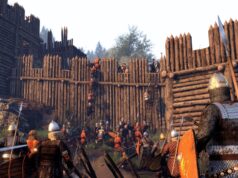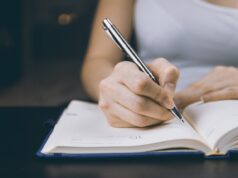
Several scholarly essays on Wuthering Heights are available online. These essays cover various topics, including the Dialectic motifs, social conflict, Sigmund Freud’s theories of psychoanalysts, and the novel’s characters.
Characters
Among the characters of Wuthering Heights are Heathcliff and Catherine. The relationship between them is unhealthy. It is full of hatred. But, unfortunately, it is also based on unfulfilled love.
The novel is set in Yorkshire, England, on the moors. It is a story about obsessive, vengeful love. Emily Bronte wrote it.
The character of Heathcliff is the protagonist of the novel. He is a dark-skinned man with bushy eyebrows and an ominous appearance. He has a thick Yorkshire accent. His wife has abandoned him. He has lost his son. He wants revenge on Edgar. He becomes an inhuman monster. He takes advantage of the people around him.
He is a coward. His father has died, and his brother Hindley abuses him. He gets into alcoholism. He also loses his wife.
Dialectic motifs

Several scholarly order essay on Wuthering Heights have discussed the book’s dialectic motifs. These motifs unify the elements of the plot and demonstrate how human perception fails to capture the full complexity of the world.
A good example is Bronte’s exploration of love in Wuthering Heights. The contrast between love and hate best explains this. In the novel, two families, Earnshaw and Linton, interact over three generations. The older family lives at Wuthering Heights, a 1500-year-old house. It represents the clash of civilization against nature. However, the story also demonstrates the power of a coherent imaginative vision.
The novel is organized in pairs of elements, such as a family tree and a flashback. A flashback is a narrator telling the story to a second narrator. It is a common practice in literature. It is used for a large part of the narrative. It helps remind the reader that two different individuals recount the events.
Sigmund Freud’s theories of psychoanalysts

Sigmund Freud’s theories of psychoanalysis have made a significant impact on modern culture. His theories have been incorporated into pop culture in a big way. These theories are based on human development, psychology, and erotic instincts. These theories have helped to create a framework for addressing problems with childhood experiences. These theories have also been updated over the years to buy essay. The latest versions of these theories have been adapted to help individuals overcome trauma and repressed emotions.
Freud’s theories of psychoanalysis focus on the role of the unconscious in a person’s life. Freud believed that the unconscious mind holds many primal human desires. He also postulated that dreams are a means by which the unconscious can show its inner psychic life. He described the dream as the royal road to the unconscious.
Comparisons with Thrushcross Grange
Throughout the novel, Emily Bronte focuses on two houses: Wuthering Heights and Thrushcross Grange. These houses symbolize two opposite aspects of life: the dark and bright sides. In addition, each home mirrors the moods and personalities of the residents.
The house Wuthering Heights, located on the Yorkshire moors, is described as a place that evokes a sense of dread. It is surrounded by dark weather and dark skies. The atmosphere is associated with Heathcliff, a proletarian character with no claim to social status.The Earnshaw and Linton families live in this environment.
On the other hand, Thrushcross Grange, located in the lower Valley, is a place of peace and calm. It is a beautiful and well-kept house. It is a perfect example of a wealthy residence.
Social conflict

Throughout Wuthering Heights, there is a conflict between the characters and society. It is the central theme of the novel.
This conflict is reflected in the behavior of the characters, in the setting, and through appearances. A significant part of the conflict is rooted in social class.
The novel explores the fragile nature of the social class system. Used this system to determine the power in 1800s England. People formed groups to work for their benefit. The upper class dominated. The lower class was in, the lower echelons of society.
The relationship between Heathcliff and Catherine represents the reality of living in a world of exploitation. They grow up with intellectual curiosity and sensual natures. The promise of the upper class to bring them up as rude as savages are not fulfilled.
Late Romanticism
The only book that Emily Bronte ever wrote was Wuthering Heights. It had a significant impact on how English literature evolved. The novel is regarded as one of the best examples of late romantic literature. It is renowned for literary qualities like a strong plot and various narrators.
The story also depends on paying close attention to the character’s emotions and the specifics of village life. The book is straightforward at first glance. It is about two families that reside in Thrushcross Grange and Wuthering Heights, respectively.
The story is deliberately developed and written in a particular style. It illustrates and elucidates the conflict’s causes, effects, and repercussions. A romantic character is the main subject of the author’s attention. Heathcliff is a person without a history.
The proprietor of Wuthering Heights discovered the orphan. The young gypsy is not a member of any of the homes. However, he is more like Earnshaw’s family in nature and spirit. The latter family is renowned for seeking genuine emotions.

The comfort of home and serenity are more critical to the Lintons from the Grange.
The conflict between these two universes is the basis of the story.
Wuthering Heights has realism in it. Therefore it is not only a simple romantic book.
Unlike the realism seen in the works of Thackeray or Dickens, Emily Bronte’s realism is unusual. She rejects finding a societal or public solution to the novel’s central issues.
She looks for the solution via the lens of the fiction’s philosophical and artistic components.
The narrative of the book has poetry-like qualities. It marked a change in literature’s purpose from one of entertainment to one of greater significance. It also depicts people’s daily lives, giving contemporary readers a glimpse into the past.
They can discover how social class, gender, and gender determine one’s life. Readers can identify with the characters in the book on a human level. They can relate to their feelings. Due to a dose of realism, it continues to be helpful.












